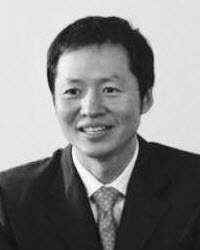Management in Korea is a regular column written by the members of Egon Zehnder Seoul, touching on various aspects of Korean enterprises and business leaders and offering management tips. -- Ed.
More and more, executives are being asked not to merely lead enterprises, but to transform them -- to develop and implement radically new ideas regarding how the organization creates value, manages operations and fits into the larger economic landscape.
Often, this need to transform comes from the emergence of new, more agile competitors. Transformation thus is necessary not just to preserve market share but also to remain relevant.
 |
(123rf) |
Under the best of conditions, this is a daunting task. But what makes transformations particularly challenging for the executive leading them is that they are likely to require strategies that are quite different from those that have worked in the past.
This is particularly true for leaders of large Korean chaebol, who have been trained in a more traditional “command and control” leadership style. In fact, we have found that CEOs and others who have been asked to lead organizational transformations must also undergo a personal transformation in their leadership philosophy.
Our global survey of more than 400 CEOs confirmed this, with 79 percent of respondents saying that as CEO, they needed the capacity to transform themselves as well as their organization.
For example, leading a transformation often requires a new perspective on complexity.
Most senior executives in Korea and elsewhere have a track record of successfully taking on complex assignments with multiple stakeholders and unknown variables.
But even a confident leader frequently views complexity as something to be tamed, if not eliminated -- even as doing so is increasingly difficult when new technologies, business models and markets are continually rearranging the playing field. Successful transformation thus requires that the executive not only be comfortable working in continual complexity -- “comfortable being uncomfortable” -- but also be able to build a similar comfort in his or her team.
 |
Eugene Kim |
One of the reasons that comfort with complexity is so important is that it is necessary in order for innovation to take place. While transformations differ from organization to organization, they almost always involve increasing the enterprise’s capacity to innovate.
But increasing innovation is not like increasing the output of a production process or the performance of a sales team.
Rather, it frequently happens when leaders foster a vibrant marketplace of ideas to solve a problem or create a product. Various options emerge and are iteratively tested and refined until one remains -- often looking very different from anything that anyone on the team imagined at the outset.
Indeed, the transformative leader can’t predetermine the outcome; to do so would be to undermine the creative process. Instead of directing his or her “troops” to a defined goal like a battlefield commander, the transformative leader needs to act more like an orchestra conductor, assembling people and resources and creating an environment that allows for creative interaction to unfold.
Of course, the leader is still responsible for meeting benchmarks and timetables -- but must do so by “orchestrating” rather than “commanding.”
In addition to innovation, companies that are disrupting their markets are often distinguished by how they view their role in society.
The company mission often goes far beyond merely maximizing return to shareholders. A consumer electronics company, for example, might see itself as bringing music and entertainment to homes and helping to create shared experiences and memories for families, a very different calling than raising earnings per share.
The transformational leader needs to identify and then bring awareness and attention to this societal role. It is not enough for this deeper meaning to simply be a byproduct of the company’s branding.
 |
Kim Ah-jeong |
Similarly, an organization’s societal role is different than the social responsibility projects and donations to public causes that many corporations undertake today (and that have been the source of occasional controversy here). Instead, an enterprise’s connection with society must be authentically reflected in the company’s decisions, incentives and hiring principles. From this foundation, an emotional bond can form between the organization, its employees and the outside world.
Being comfortable with complexity, orchestrating (rather than commanding) creativity and connecting the organization to society -- these are three of the core challenges that define leading an organizational transformation.
Because succeeding at them generally requires an accompanying personal transformation, it is critical for the executive spearheading a transformation for the first time to be able to turn to a board member, executive coach or other adviser with transformation experience for advice and counsel. Further, seeking such counsel needs to be explicitly encouraged, given the way in which asking for help or expressing uncertainty is frowned upon in Korean business culture.
Transformation is an inherently risky undertaking. Understanding and being prepared for the extent of that change, however, can significantly mitigate that risk for both the organization and the executive.
By Eugene Kim and Kim Ah-jeong
Eugene Kim is the managing partner of advisory firm Egon Zehnder Seoul. He can be reached at eugene.Kim@egonzehnder.com. Kim Ah-jeong is the head of research at Egon Zehnder Seoul. She can be reached at AJ.Kim@egonzehnder.com. -- Ed.










